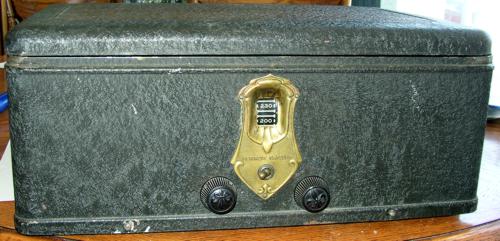
Submitted by Raymond Duck
Early Lighthouse or Radio Station Radio
CAN YOU IDENTIFY THIS RADIO’S ORIGIN?
The above radio is manufactured by DeForest Crosley, 1927, and is contained in a metal box. It may have been used in the early days of radio beacon stations or lighthouses. The tuner scale ranges from 200-560. Does anyone know how this radio may have been utilized for navigation?
The following information was provided Anthony Martini in 2021 that may be of some help.
“Before I was an ATC Center controller hired in 1979, I was an Air Force navigator for 6 years. Many aircraft from the 1920’s up had a “radio direction finder” of some sort…. which was the easiest thing to operate in the cockpit. It’s use was very simple. Connected to a loop antenna on the aircraft, a needle in the cockpit would simply point to the source of the broadcast, like any ADF of the last 50 years. Since the Crosley bandbox was both battery powered and/or electrical powered, it is possible that an aircraft may have had the Bandbox onboard for use as a navigational aid….receiver only.
The metal box radio in your photo was normally installed in any attractive wooden cabinet for home use, and attached to external speakers, in other words, the metal box was the “guts” of the radio cabinet….much like car radios in the dashboard. I do not know why a normal AM radio would be in an ATC facility or lighthouse other than recreation, unless in 1927 some aircraft could transmit by radio signal (either voice of Morse Code) within the frequency band of the Bandbox, then the ATC/lighthouse could have had a directional loop antenna to point to the bearing of the aircraft/ship. That would require more research, but there certainly was radio transmission from aircraft before 1927.
As a humorous sidenote…..in the 1970’s USAF, we were flying the F-4 Phantom jet, and in training sessions the “good guy” would takeoff first and patrol somewhere unknown….then the “bad guy” would takeoff and try to find and “kill” the “good guy”. If the “good guy” crew was new, the “bad guy” would key the mic and ask for a “short count” to check the radio….and of course, the new crew would comply, unaware that the “bad guy” was obtaining an ADF relative bearing which gave away the “good guy’s” position by the needle pointing to the transmitting aircraft….and then the fight started…..”